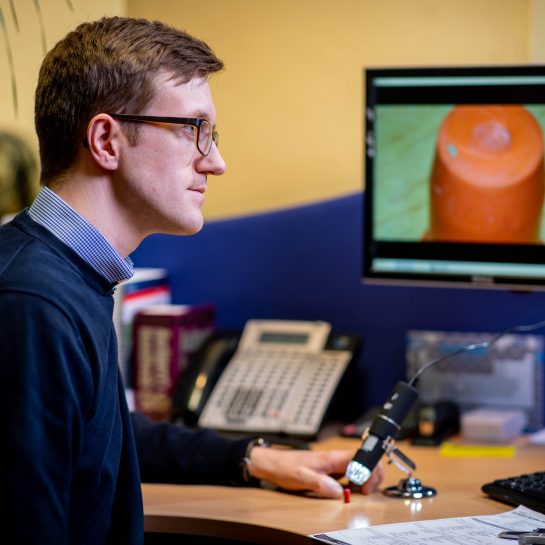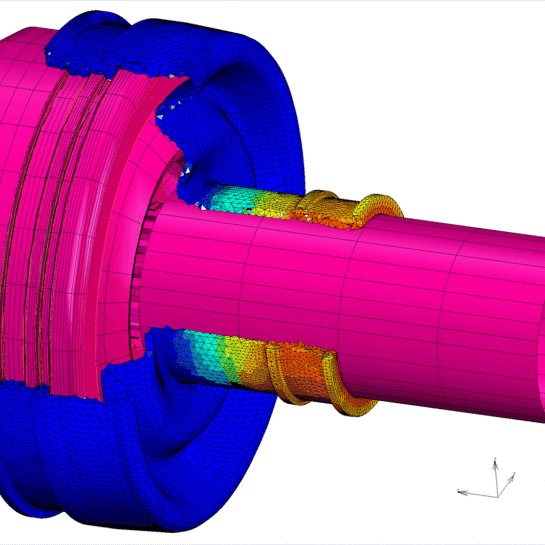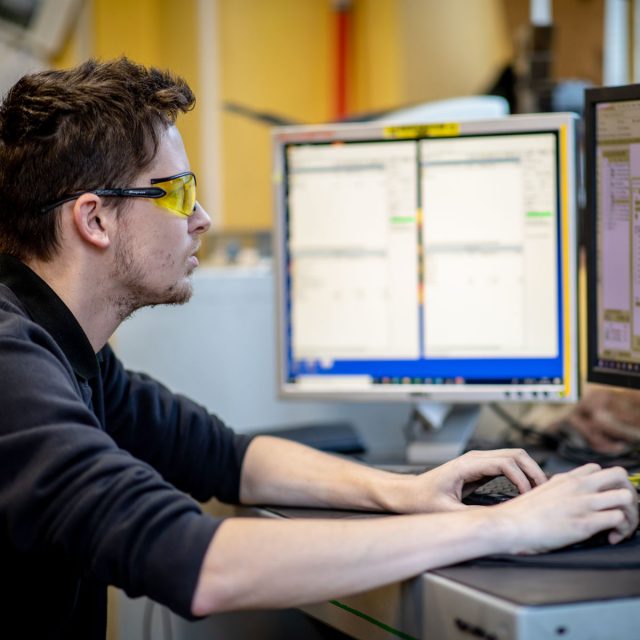FINITE ELEMENT ANALYSIS (FEA)
Helps us to understand whether a product will work to everyone’s expectations.


Helps us to understand whether a product will work to everyone’s expectations.

If the cost of prototyping a part through manufacture is prohibitive, or you are on a tight timescale but looking at a lengthy test period, FEA will deliver time savings and the reduction of test cycles and therefore cost. This can be done through simulated analysis of product failure. FEA enables us to help you to develop and improve designs prior to cutting a tool. It can also be used to retrospectively analyse potential causes of a product failure.

Therefore, highly specialised material models are needed to allow for a nonlinear stress-strain relationship and temperature-dependent material properties, with specialist material testing required to feed the analysis models with fully representative data. One typical material model is the Ogden strain energy function:
The Ogden deviatoric strain energy function is given by the following series expansion:

The Ogden model will allow for the non-linear material response, leading to accurate analysis results. Our investigations of rubber and polymer failures will help to reduce and identify potential failures.
This means that in order to work with a true representation of the material real-world response to stress-strain, particularly when temperature is applied, we need to test the polymer material under conditions that closely replicate the application conditions, and fully characterise its specific responses, before using those outputs within the modelling software.
Nodes carry extrapolations of stress/strain and other engineering outputs; it is not simply a case of uploading a model and applying the material and loading conditions, which is where the skill and knowledge of the FE analyst is required.


Results interpretation in polymer FEA is where the skill of the analyst and knowledge of polymers really comes into play; it is not simply a case of reviewing the analysis results against the tested material properties, because whilst the results will provide the calculated stress, deformation etc., it cannot account for the specific requirements of polymer design and manufacture. For example, whilst the predicted stress result may be within the material’s ultimate tensile strength (UTS), it might be that repetitive loading to a near UTS value will damage the polymer’s material structure, leading to degradation of the material and ultimate failure of the part.
Dynamic simulation of the anticipated results then gives a real insight into the likely articulation of a product. Using our FEA software, we are able to advise whether a proposed design will function to your specifications prior to manufacture of a mould tool; this has potential for significant cost saving on new development projects. We can also use the FEA software in the case of previous product failures to help determine what design modifications are necessary to ensure the product will function as required on future variants.

Know exactly what you want? Upload your drawings so we can provide a tailored solution
Get in touch with us today by email [email protected]